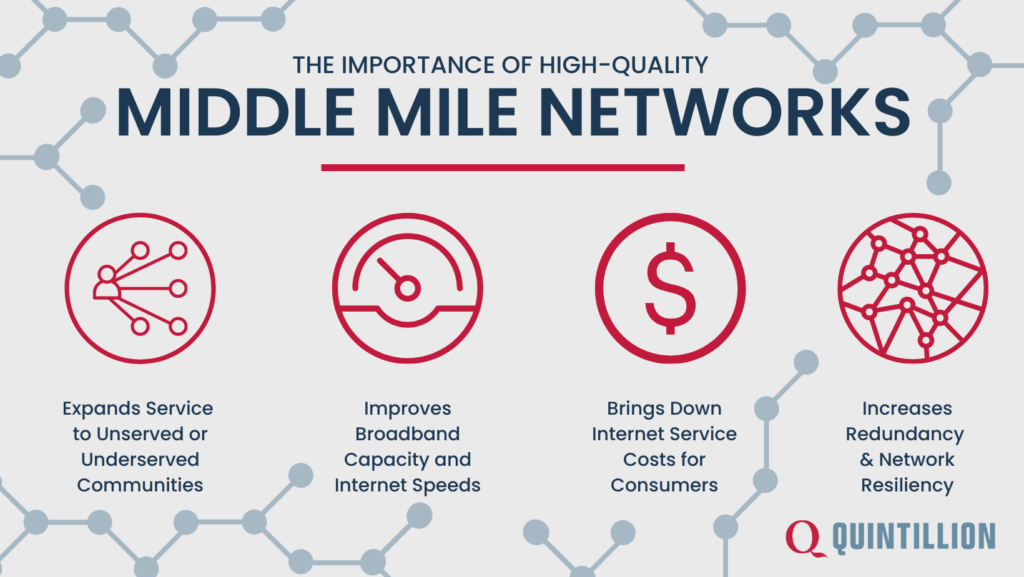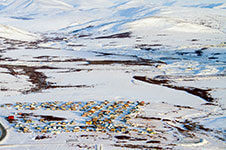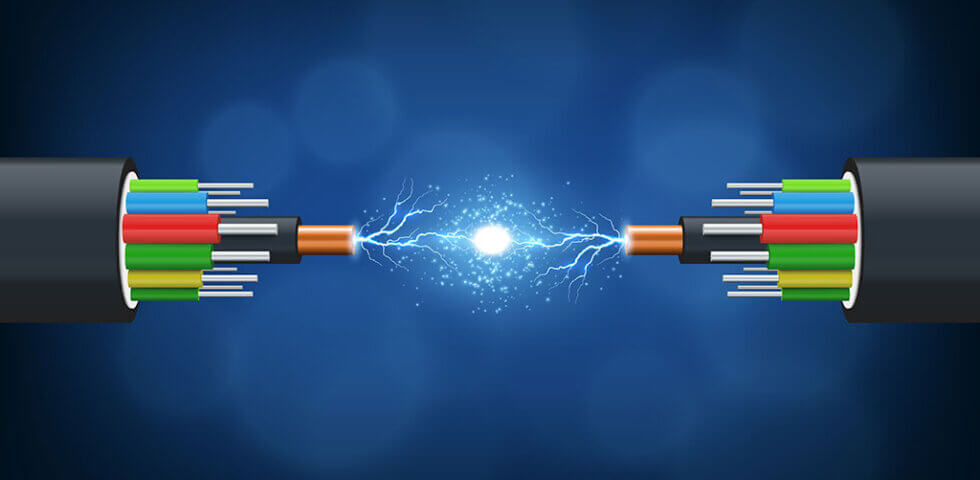In a world that is becoming increasingly more digital, enabling broadband connectivity for all Americans has become more crucial than ever before. The internet is no longer a way for people to merely enjoy online entertainment. For many Americans, the internet has become a staple in how they do life. Many people work, receive care, get an education, and connect with loved ones online.
However, nearly 1 in 4 households in the United States still don’t have access to the internet in their homes. With the COVID-19 pandemic making people more reliant on the internet, many are seeking to find solutions to this gap in connectivity. And while many factors prevent people from getting internet access, a lack of middle-mile broadband infrastructure is a major part of the issue.
What Is a Middle Mile Vs. Last Mile Network?
Multiple components make broadband internet possible. Here’s an overview of global, last-mile, and middle-mile networks and how they all work together to get internet service to your location.
Global Internet Network
The global internet network consists of subsea cables that connect cities, countries, and continents to data centers across the world.
Last Mile Network
Last-mile infrastructure is the endpoint for this data. It’s the part of the internet network that delivers telecommunication services directly to customers. This data is delivered through a local Internet Service Provider (ISP) to your house or business. Whether delivered through a satellite or cables, the ISP often builds and owns the infrastructure used to transfer this data. When an individual pays for internet services, they are paying an ISP for last-mile services.
Middle Mile Network
“Middle mile,” “backhaul,” and “transport” are all terms used to describe the same thing. The middle mile is the segment of internet connectivity that connects the global internet network to the last mile. Often delivered via high-speed fiber, middle-mile networks serve as the backbone for a specific region. With an expansive middle-mile system, local ISPs pay backhaul providers to use and build off of this infrastructure and extend service to individual customers.
Types of Middle Mile Infrastructure
Not all middle-mile networks are made equal. There are three main types of middle mile that can serve as a broadband backhaul solution:
- Fiber: Fiber optic cable networks are the gold standard of connectivity. Middle-mile fiber provides the highest speeds, bandwidth availability, and reliability when compared to any other type of broadband infrastructure. Fiber optic cables also provide incredibly low latency and are not susceptible to radiofrequency interception or disruption. Fiber optic cables often last decades, with an estimated lifespan of 25 years or more.
- Microwave: Microwave middle mile network transmits data wirelessly using radio frequencies sent between towers. The towers that transmit this data make up the middle-mile network, while last-mile services are delivered by sending this data to a wireless radio with a small microwave antenna attached.
- Satellite: Satellites are another form of middle-mile network that transmit data from satellites to a house router or modem. As satellites are not limited by geography in the same ways cables are, this middle mile solution can bring connectivity to almost any location, including remote locations. However, satellite provides a slower connection and is sensitive to interference.
The Importance of High-Quality Middle Mile Networks

When seeking solutions to close gaps in connectivity across the US, many people or organizations may focus primarily on last-mile services. In areas where an extensive middle-mile network already exists, the problem then lies in extending internet infrastructure to every town, neighborhood, and individual home or business so they can then access that broadband.
However, there is not adequate middle-mile infrastructure in many parts of the country – including many regions in Alaska. By focusing funding initiatives and future projects on middle-mile infrastructure, communities can more readily create expansive networks that provide a variety of benefits.
Expands Service Unserved Communities
In many unserved or underserved communities, the primary issue is that a middle-mile network doesn’t exist. While a fiber backbone might be built in a larger, more populated city nearby, this network doesn’t extend far enough to reach every surrounding neighborhood or home. Regions that are too far from a middle-mile network either can’t access the internet or have to rely on less affordable, low-speed, and low-bandwidth alternatives.
Improves Broadband Capacity and Internet Speeds
Middle-mile networks enable high-speed broadband service. In areas where there is no middle mile network or a poor broadband connection, consumers often pay a high price tag for incredibly poor services. Internet speeds may be so slow that consumers can’t access most online activities, such as streaming television, visiting with a doctor online, or shopping online.
When high-quality middle-mile networks are built in communities, they drastically improve internet service in the areas they serve. Consumers receive access to high-speed internet that enables online entertainment, research and education, emergency services, remote work, and e-commerce.
Brings Down Costs for Consumers
Not only do middle-mile networks make internet connectivity possible, but they also have the potential to help bring down service costs for individuals using the internet. In some locations, the middle-mile network is owned by a large ISP, which limits competition and often hikes up prices for consumers. However, when multiple ISPs connect to a larger middle-mile network owned by a third party, ISPs need to offer more competitive pricing – making the cost of internet services more affordable for these locations.
Can Increase Redundancy and Network Resiliency
In areas where a single ISP monopolizes the area, adding a middle mile network not only increases competition but also helps make the network more redundant. Network redundancy is when data has more than one path it can take. If one path were to fail, there are alternative routes that data could take. This makes internet service more reliable and increases resiliency to threats, as there is a lower chance of complete network failure.
Quintillion’s Middle-Mile Network
While many American communities lack the middle-mile infrastructure necessary to bridge gaps in connectivity and provide high-speed, rural Alaskan communities face significant barriers in achieving high-quality broadband for all. There are many remote, hard-to-access towns throughout Alaska that are located far from central cities where middle-mile networks are already well established.
Quintillion made a major step in bridging the digital divide in Alaska by bringing fiber to the US Arctic. Quintillion’s middle-mile fiber optic cable system enables communities in the North Slope Arctic Region and Northwest Alaska to access high-speed internet service through local ISPs. With this new connectivity, people can seek telehealth and teletherapy treatment, play online games or stream a movie, learn or work remotely, and more.
Investment in middle-mile networks in the state of Alaska and other parts of the country is essential for achieving the goal of broadband for all. Without a broadband backbone that can reach each and every location, there will always be communities that can’t access reliable internet services. While there are many challenges in the way of achieving this connectivity, we’ve seen exciting growth in the last decade and believe a new era is underway.
Have questions about Quintillion’s Arctic fiber optic cable system? Connect with our team to learn more.















